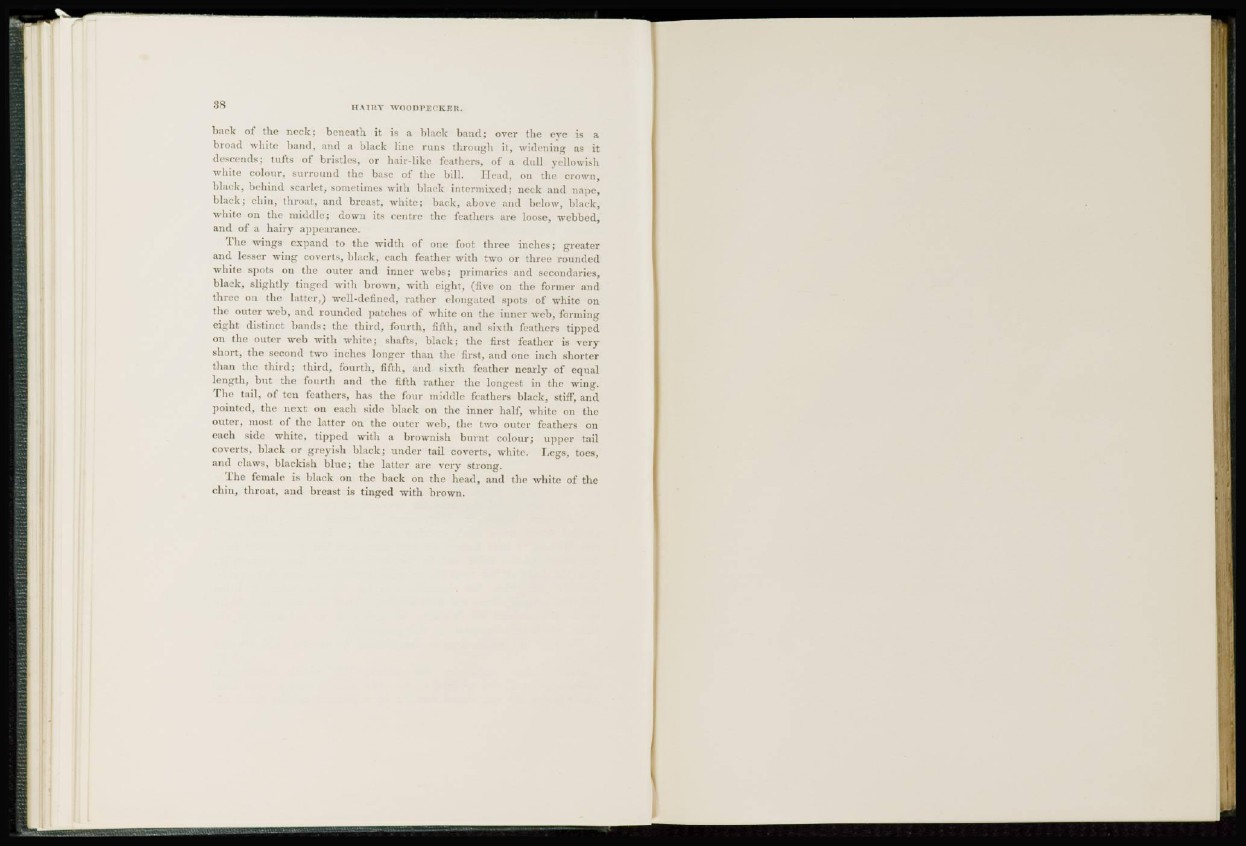
back of the nock; beneath, it is a black band; over the eye is a
broad white band, and a black line runs through it, widening as it
descends; tufts of bristles, or hair-!ike feathers, of a dull yellowish
white colour, surround the base of the bill. Head, on the crown,
black, behind scarlet, sometimes with black intermixed; neck and nape,
black; chin, throat, and breast, white; back, above and below, black,
white on the middle; down its centre the feathers are loose, webbed,
and of a hairy appearance.
The wings expand to the width of one foot three inches; greater
and lesser wing coverts, black, each feather with two or three rounded
white spots on the outer and inner webs; primaries and secondaries,
black, slightly tinged with brown, with eight, (five on the former and
three on the latter,) well-defined, rather elongated spots of white on
the outer web, and rounded patches of white on the inner web, forming
eight distinct bands; the third, fourth, fifth, and sixth feathers tipped
on the outer web with white; shafts, black; the first feather is very
short, the second two inches longer than the first, and one inch shorter
than the third; third, fourth, fifth, and sixth feather nearly of equal
length, but the fourth and the fifth rather the longest in the wing.
The tail, of ten feathers, has the four middle feathers black, stiff, and
painted, the next on each side black on the inner half, white on the
outer, most of the latter on the outer web, the two outer feathers on
each side while, tipped with a brownish burnt colour; upper tail
coverts, black or greyish black; under tail coverts, white. Tegs, toes,
and claws, blackish blue; the latter arc very strong.
The female is black on the back on the head, and the white of the
chin, throat, and breast is tinged with brown.